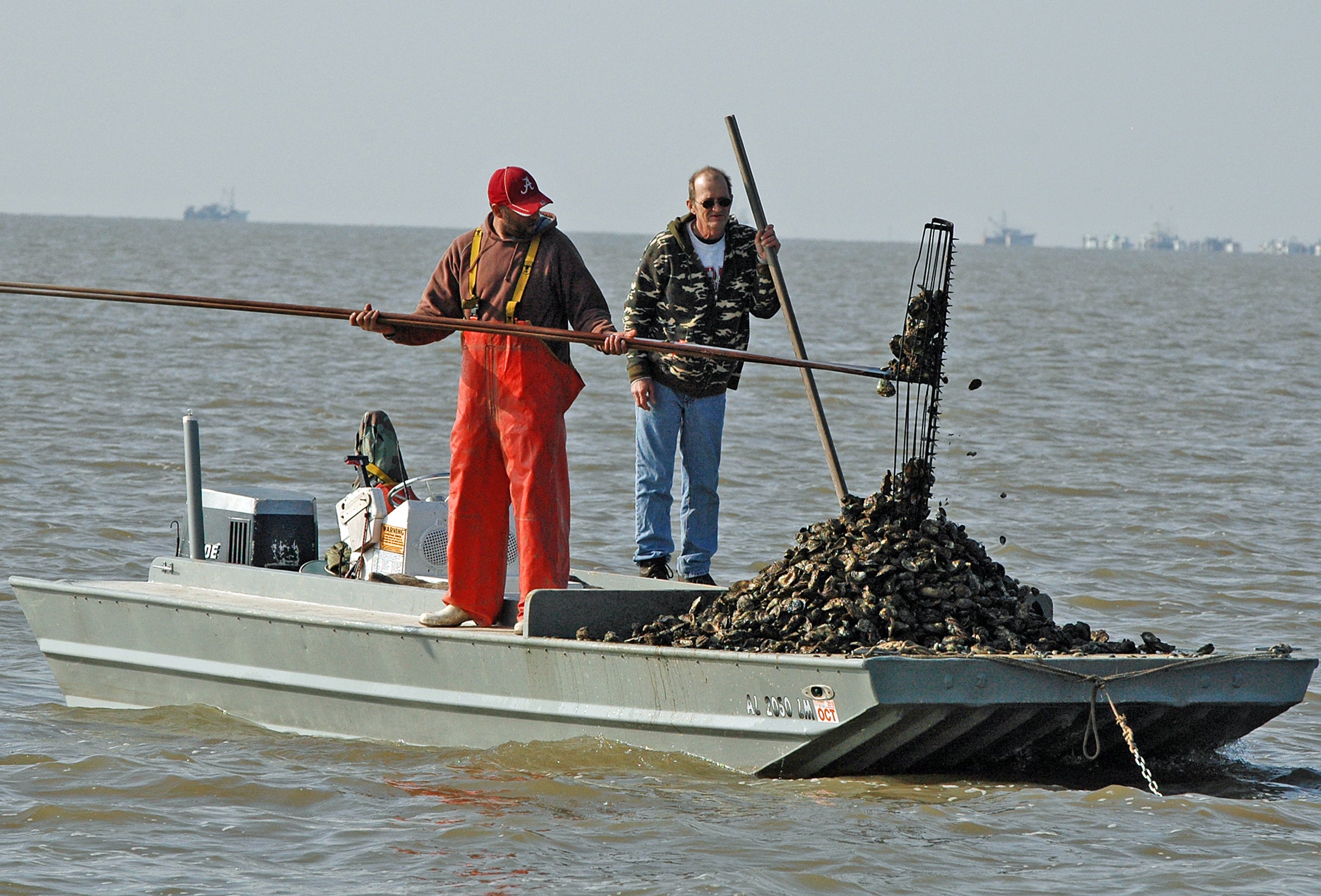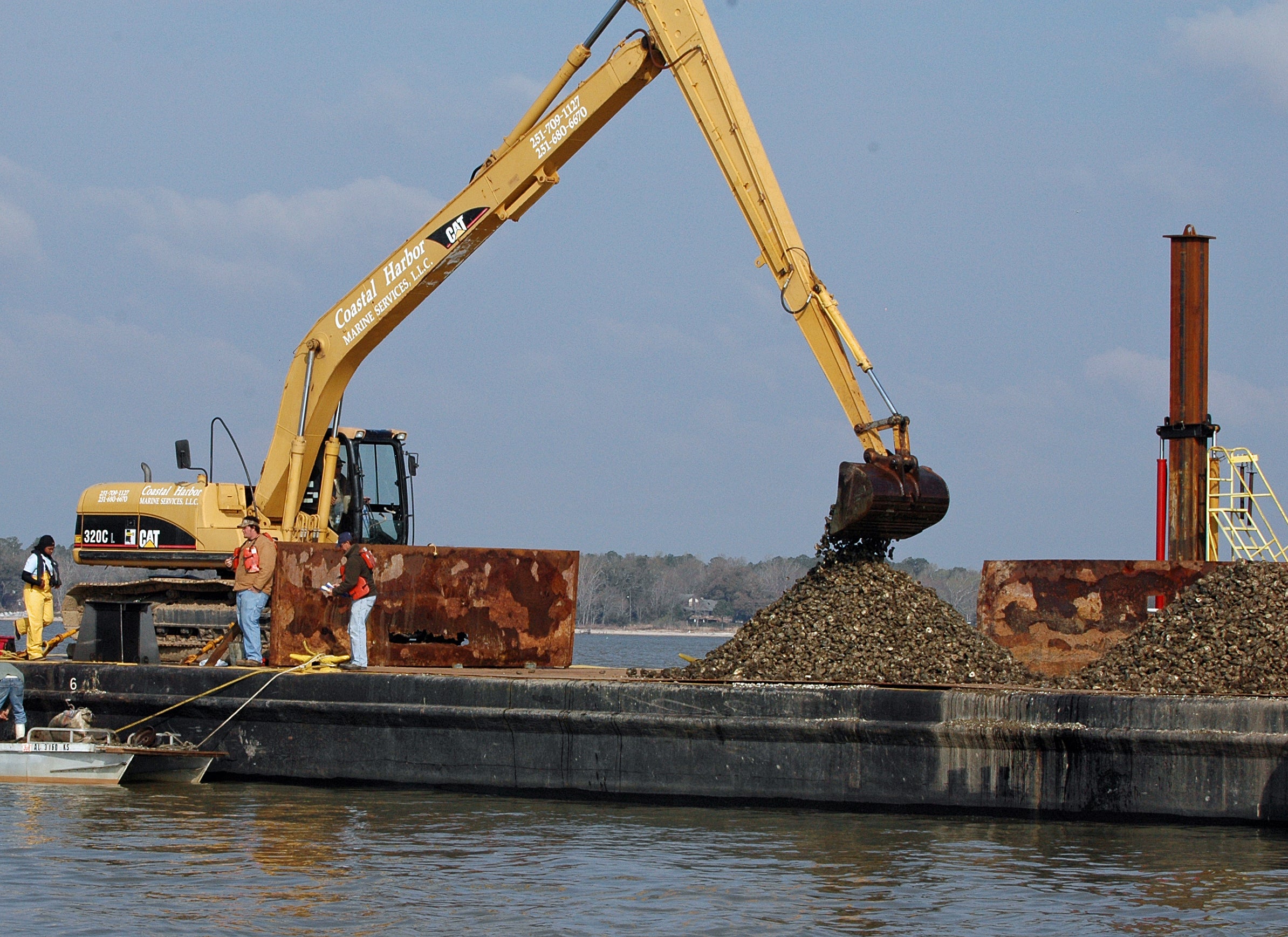By DAVID RAINER, Alabama Department of Conservation and Natural Resources
The high water in January that shut down the oyster season in Alabama has finally subsided, and the oyster catchers were recently cleared to resume the harvest of the state’s prized oysters by the Alabama Department of Public Health (ADPH).
This may not seem like big news for some, but it is great news considering the uncertainty of whether Alabama’s oyster reefs would be open at all.
The area known as Cedar Point West, just west of the Dauphin Island bridge and Cedar Point Pier, opened Tuesday, February 4, to commercial and recreational harvest of oysters. Harvest hours will be 7 a.m. until 2 p.m. with a commercial limit of six sacks.
“There were some oysters that were not detected during our survey, but while the oyster catchers were working, they found a pretty sizeable area of harvestable oysters,” said Alabama Marine Resources Division (MRD) Director Scott Bannon. “So we’re going to give them the opportunity to work in that area.”
Oyster harvesting had been shut down because of a lack of legal-size oysters on the traditional oyster reefs. MRD surveyed the Cedar Point West, Cedar Point East and Heron Bay reefs again and found the oyster population better than expected.
“Those areas were as productive or more productive than we anticipated,” Bannon said. “Cedar Point East was an area that we did not have good data on because it is so big and the water is deeper with some other challenges there. But the catchers worked there for a couple of weeks and harvested just over 2,500 sacks. In addition to the harvestable oysters, they discovered a lot of sublegal oysters, which will be available for harvest next season.
“On the other reefs at Cedar Point West and Heron Bay, they saw the same thing. They found good, harvestable-size oysters, and they found plenty of sublegal oysters, which, again, will be next year’s crop. We have good confidence that this upcoming fall season will be as good as this season and maybe better.”
Before this week’s reopening, Alabama oyster catchers had harvested 9,500 sacks of the succulent bivalve mollusks when the growing waters were closed by ADPH on December 27, 2019, as a precaution due to high river levels, which may increase bacteria in the area. Continued high water then delayed the opening for additional harvest until this week.
“The 9,500 sacks harvested in this season to date has been good,” Bannon said. “That was more than the last five years combined. I feel like we’re turning a corner.”
A harvestable oyster is 3 inches across its widest point. MRD Conservation Enforcement Officers use a 3-inch ring to measure the oysters. If the oyster passes through the ring, it is considered sublegal or undersized. If the oyster touches the sides of the 3-inch ring, it is considered legal to harvest. MRD officers inspect for licenses, oyster size and sack size to ensure compliance with the regulations.
With quality oysters like those found in Alabama in high demand, the oyster catchers were rewarded with a quality return on their work.
“The price was really good this season,” Bannon said. “At one point, it was 85 cents per pound, which was almost double historic highs. When the waters closed in December, they were still 65 cents per pound.”
Bannon said the high demand for oysters is related to high-water events last year that closed oyster production in Louisiana and Mississippi.
“The freshwater events from last year pretty much decimated the oysters in Mississippi and caused significant damage in Louisiana,” he said. “The only Gulf oysters were coming out of Texas. We are on a different river system and didn’t have the same high water they had last year. The prolonged influx of freshwater that we received did have a negative impact on several fisheries, but, thankfully, the impact to our oysters was not as bad as it was in other states.”








